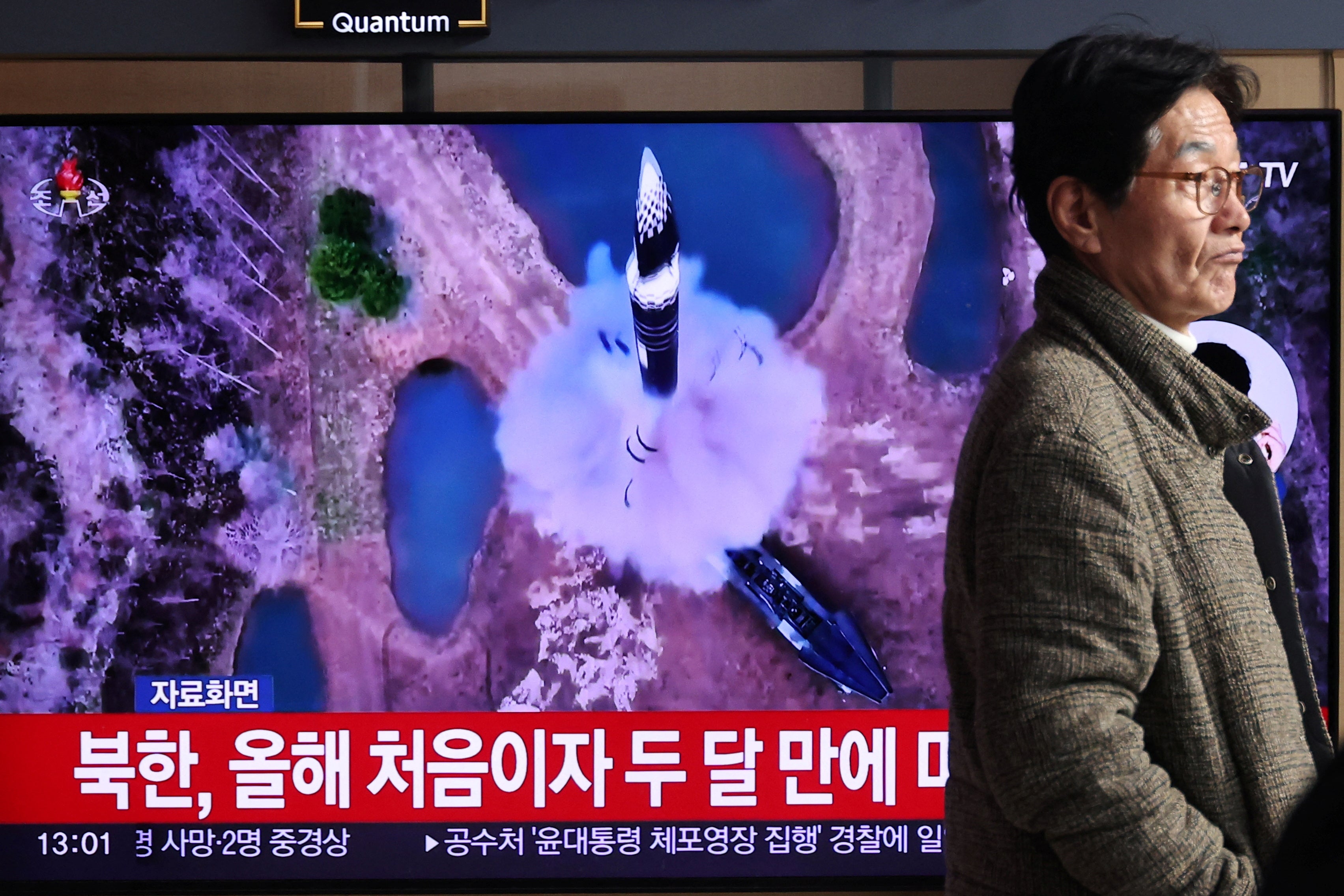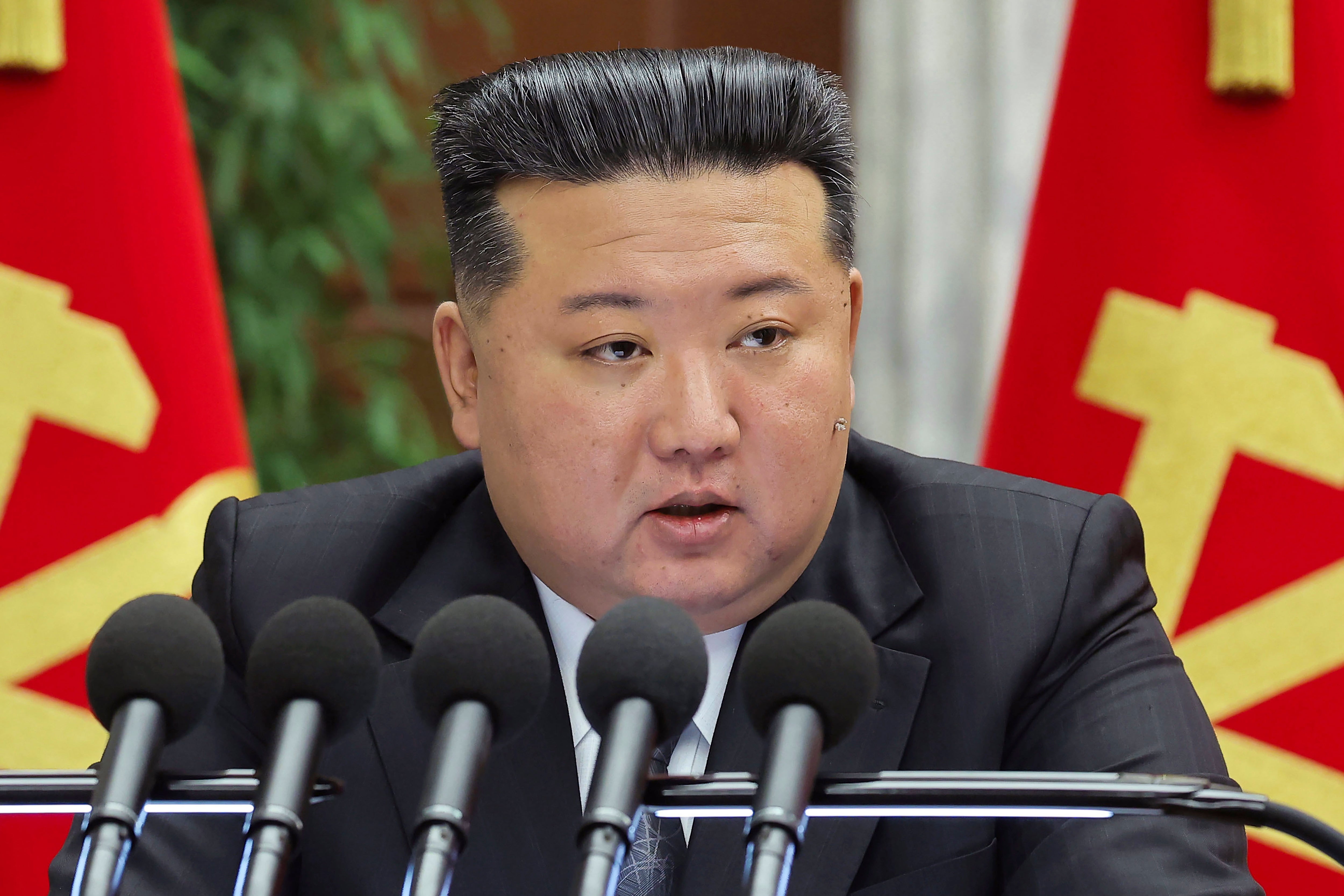North Korea fires ballistic missile as Blinken visits Seoul
Missile flew 1,100km before splashing down in Sea of Japan
Your support helps us to tell the story
From reproductive rights to climate change to Big Tech, The Independent is on the ground when the story is developing. Whether it's investigating the financials of Elon Musk's pro-Trump PAC or producing our latest documentary, 'The A Word', which shines a light on the American women fighting for reproductive rights, we know how important it is to parse out the facts from the messaging.
At such a critical moment in US history, we need reporters on the ground. Your donation allows us to keep sending journalists to speak to both sides of the story.
The Independent is trusted by Americans across the entire political spectrum. And unlike many other quality news outlets, we choose not to lock Americans out of our reporting and analysis with paywalls. We believe quality journalism should be available to everyone, paid for by those who can afford it.
Your support makes all the difference.North Korea fired a ballistic missile out to sea off its east coast on Monday, South Korea’s military reported.
The missile flew 1,100km and landed between the Korean peninsula and Japan, the joint chiefs of staff said.
It was presumed to be a single “medium-range ballistic missile” launched from “somewhere in Pyongyang”, the military said.
The Japanese defence ministry confirmed the projectile splashed down in the Sea of Japan just minutes after its launch was announced.
The launch came as US secretary of state Antony Blinken visited South Korea amid a deepening political crisis sparked by a shortlived declaration of martial law last month by now-impeached president Yoon Suk Yeol.
Mr Blinken was reportedly holding talks with South Korean allies about the North Korean nuclear threat and other pressing matters.
At a year-end political conference, North Korean leader Kim Jong Un had pledged to enforce the “toughest” anti-US policy. He had criticised Washington’s attempts to bolster security cooperation with Seoul and Tokyo, referring to it as a “nuclear military bloc for aggression”.
Monday’s launch was North Korea’s first in two months. Pyongyang fired at least seven ballistic missiles off its east coast on 5 November, hours before the US presidential election. The missiles flew to an altitude of 100km and covered a range of 400km before falling into the ocean outside Japan’s exclusive economic zone.

A few days earlier, North Korea had fired its largest intercontinental missile, which flew a record distance in a demonstration that it could strike the US. The launch of Hwasong-19 had drawn immediate condemnation from the UN as well as the US and its allies.
In spite of sanctions announced by the UN security council, North Korea continues to progress in its nuclear weapons and missile programmes. Mr Kim has consistently rejected “denuclearisation” talks.
According to the 2024 annual threat assessment prepared by US intelligence agencies, Mr Kim views nuclear weapons as central to North Korea’s security and deterrence strategy.

“North Korea also unveiled a purported tactical nuclear warhead and claimed it could be mounted on at least eight delivery systems, including an unmanned underwater vehicle and cruise missiles,” the assessment states.
According to a report published last November by the Center for Arms Control and Non-Proliferation, a nonprofit based in Washington, North Korea conducted over 220 missile tests between 2012 and 2024 and debuted a variety of missiles with increasing ranges.

Join our commenting forum
Join thought-provoking conversations, follow other Independent readers and see their replies
Comments